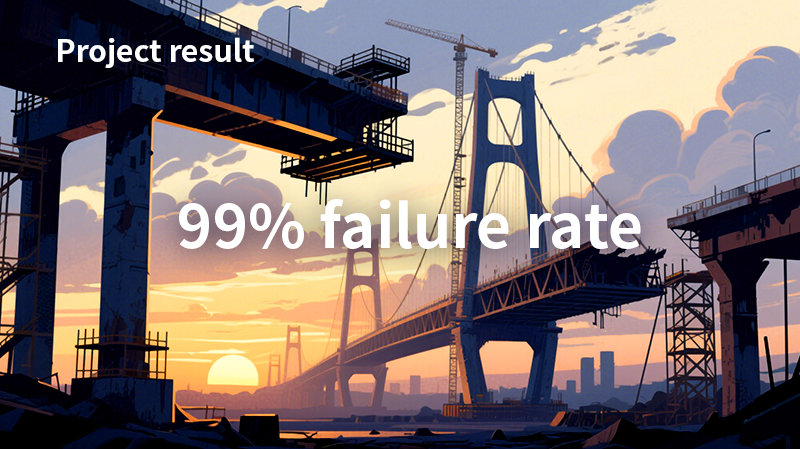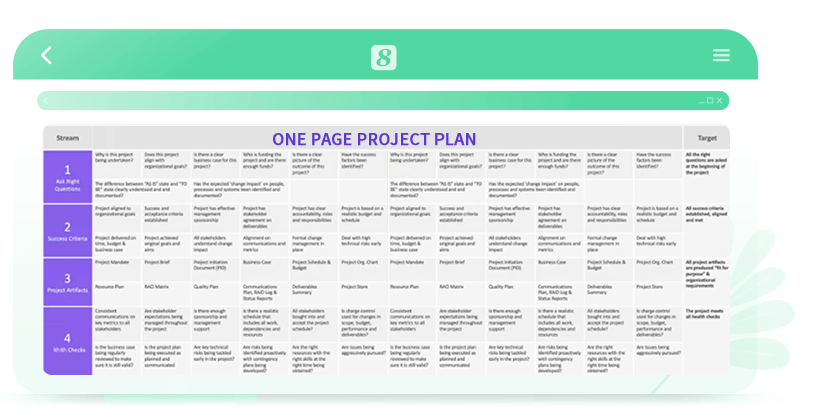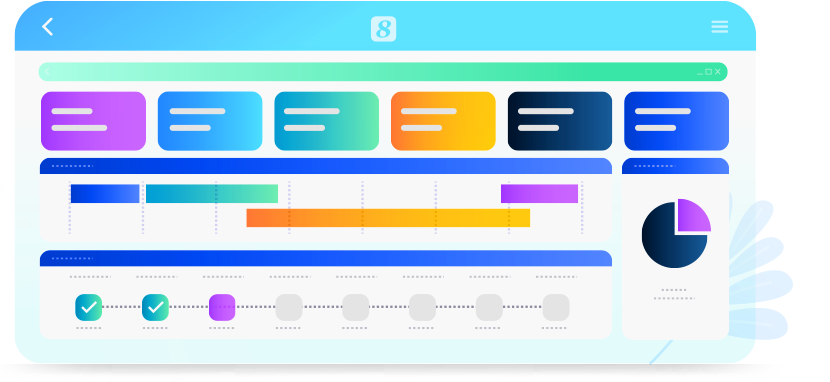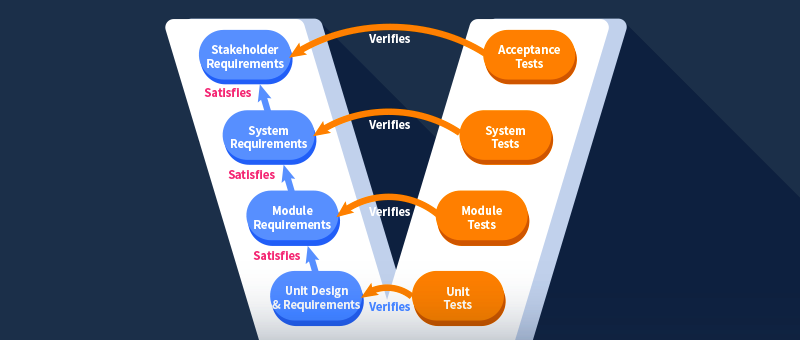
The Project Planning Trap: Uncovering Problems That Plans and Methodologies Miss



Question: Can problems cannot be effectively uncovered in a project plan without people acknowledging them?
×Google AI Analysis:
Yes, problems cannot be effectively uncovered in a project plan without people acknowledging them. Acknowledgment is crucial for identifying and addressing potential issues, including risks, blockers, and areas for improvement. Open communication and feedback from team members and stakeholders are essential for building a comprehensive understanding of the project and proactively addressing potential problems.
Here's why acknowledgement is vital:
Identifying Project Blockers and Impediments:
Recognizing and naming project blockers (obstacles that prevent work from progressing) is a crucial first step in eliminating them.
Validating Assumptions and Constraints:
Ensuring that underlying assumptions and constraints are accurate is important to avoid project derailment, which can happen if assumptions are flawed.
Uncovering Potential Risks:
Stakeholder collaboration can help uncover potential risks that could have a negative impact on the project, enabling proactive mitigation strategies.
Learning from Experience:
Capturing lessons learned throughout the project, especially during phase-gate reviews, helps the team identify what worked well and what could be improved in the future.
Building a Shared Understanding:
Open communication and feedback from all stakeholders create a shared understanding of the project, its goals, and potential challenges, leading to more effective problem-solving.
Proactive Risk Management:
By identifying potential risks early, project teams can develop proactive solutions and mitigation strategies to prevent them from becoming major issues.
Improving Communication:
Open communication and feedback foster an environment where potential problems can be identified early, leading to smoother project operations.
In essence, without acknowledgment, problems can remain hidden, potentially leading to delays, cost overruns, and project failure. Encouraging open communication and feedback from all stakeholders is crucial for identifying and addressing potential problems proactively.
Question: What % of large projects are completed on time within budget and delivered the expected benefits as well?
×Google AI Analysis:
A very small percentage of large projects are completed both on time and within budget. Studies indicate that only about
 of megaprojects come in on budget and on time, and less than 1% deliver the expected benefits as well. In other words, the vast majority of large projects either go over budget, over schedule, or both.
of megaprojects come in on budget and on time, and less than 1% deliver the expected benefits as well. In other words, the vast majority of large projects either go over budget, over schedule, or both.
Here's a more detailed breakdown:
Megaprojects (defined as those costing at least $1 billion):
A significant portion (less than 50%) go over budget, and only a small fraction (9%) are both on budget and on time.
General Large Projects:
Research suggests that a large percentage of large projects (over 90% in some studies) go over budget, over schedule, or both.
Construction Projects:
Construction projects are particularly prone to overruns, with some studies showing that a majority (over 70%) encounter cost overruns due to inaccurate initial estimates.
IT Projects:
Large IT projects are also known to be prone to cost overruns, with some studies suggesting that half of them significantly exceed their budgets.
Why do large projects often fail to stay on time and budget?
Several factors can contribute to project failures, including:
Inaccurate initial estimates:
Optimistic budget projections that don't account for unforeseen circumstances or potential risks can lead to overruns.
Unforeseen risks and changes:
Unforeseen events, changes in scope, or delays can disrupt project timelines and budgets.
Lack of project management expertise:
Insufficient project planning, inadequate risk analysis, and poor communication can hinder project success.
External factors:
Economic conditions, labor shortages, or changes in regulations can impact project costs and timelines.
Question: How dishonest are project plans in general?
×Google AI Analysis:
Project plans can be dishonest in various ways, from being overly optimistic about timelines and budgets to intentionally omitting critical details or risks. These issues can lead to project failures, delays, and increased costs.
Here's a breakdown of how project plans can be dishonest:
1. Overly Optimistic Estimates:
- Timelines: Project managers might underestimate the time required for tasks, leading to unrealistic deadlines and subsequent delays.
- Budgets: Costs might be underestimated, potentially causing budget overruns.
- Resource Availability: The availability of resources (personnel, materials, etc.) might be inaccurately assessed, leading to delays.
2. Inaccurate or Missing Information:
- Scope Creep: Changes in project scope might not be adequately communicated or planned for, causing delays and cost overruns.
- Risk Identification: Potential risks and challenges might be overlooked or downplayed, leading to unforeseen problems.
- Data Integrity: Plans based on incomplete or inaccurate data are likely to fail.
3. Lack of Transparency and Communication:
Hidden Agendas:
Stakeholders might have conflicting goals or hidden agendas that are not openly discussed.
Communication Failures:
Poor communication between team members and stakeholders can lead to misunderstandings and delays.
Lack of Feedback:
Insufficient feedback loops can prevent timely identification and resolution of issues.
4. Ethical Considerations:
- Integrity: Project managers should be truthful and fair in their planning.
- Accountability: Clear responsibilities and accountability within the project team are crucial.
Consequences of Dishonest Project Plans:
- Project Failure: Dishonest plans can lead to projects failing to meet their objectives.
- Increased Costs: Delays and scope creep can lead to significant cost overruns.
- Damaged Relationships: Dishonest practices can damage trust and relationships between stakeholders.
- Reputational Damage: Poor project performance can harm the reputation of the project team or organization.
Question: What % of large projects are completed on time within budget and delivered the expected benefits as well?
×Google AI Analysis:
A very small percentage of large projects are completed both on time and within budget. Studies indicate that only about
 of megaprojects come in on budget and on time, and less than 1% deliver the expected benefits as well. In other words, the vast majority of large projects either go over budget, over schedule, or both.
of megaprojects come in on budget and on time, and less than 1% deliver the expected benefits as well. In other words, the vast majority of large projects either go over budget, over schedule, or both.
Here's a more detailed breakdown:
Megaprojects (defined as those costing at least $1 billion):
A significant portion (less than 50%) go over budget, and only a small fraction (9%) are both on budget and on time.
General Large Projects:
Research suggests that a large percentage of large projects (over 90% in some studies) go over budget, over schedule, or both.
Construction Projects:
Construction projects are particularly prone to overruns, with some studies showing that a majority (over 70%) encounter cost overruns due to inaccurate initial estimates.
IT Projects:
Large IT projects are also known to be prone to cost overruns, with some studies suggesting that half of them significantly exceed their budgets.
Why do large projects often fail to stay on time and budget?
Several factors can contribute to project failures, including:
Inaccurate initial estimates:
Optimistic budget projections that don't account for unforeseen circumstances or potential risks can lead to overruns.
Unforeseen risks and changes:
Unforeseen events, changes in scope, or delays can disrupt project timelines and budgets.
Lack of project management expertise:
Insufficient project planning, inadequate risk analysis, and poor communication can hinder project success.
External factors:
Economic conditions, labor shortages, or changes in regulations can impact project costs and timelines.
Problems in project plans (regardless to what formats) are often very difficult to uncover due to factors like insufficient planning, lack of competence, poor communication, unrealistic expectations and a lack of visibility into the project's progress and potential risks. Furthermore, challenges like scope creep, inadequate resource allocation, and unclear goals can also make it hard to identify issues early on.



































































































